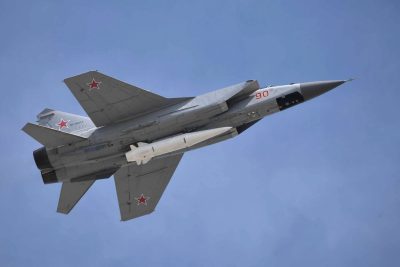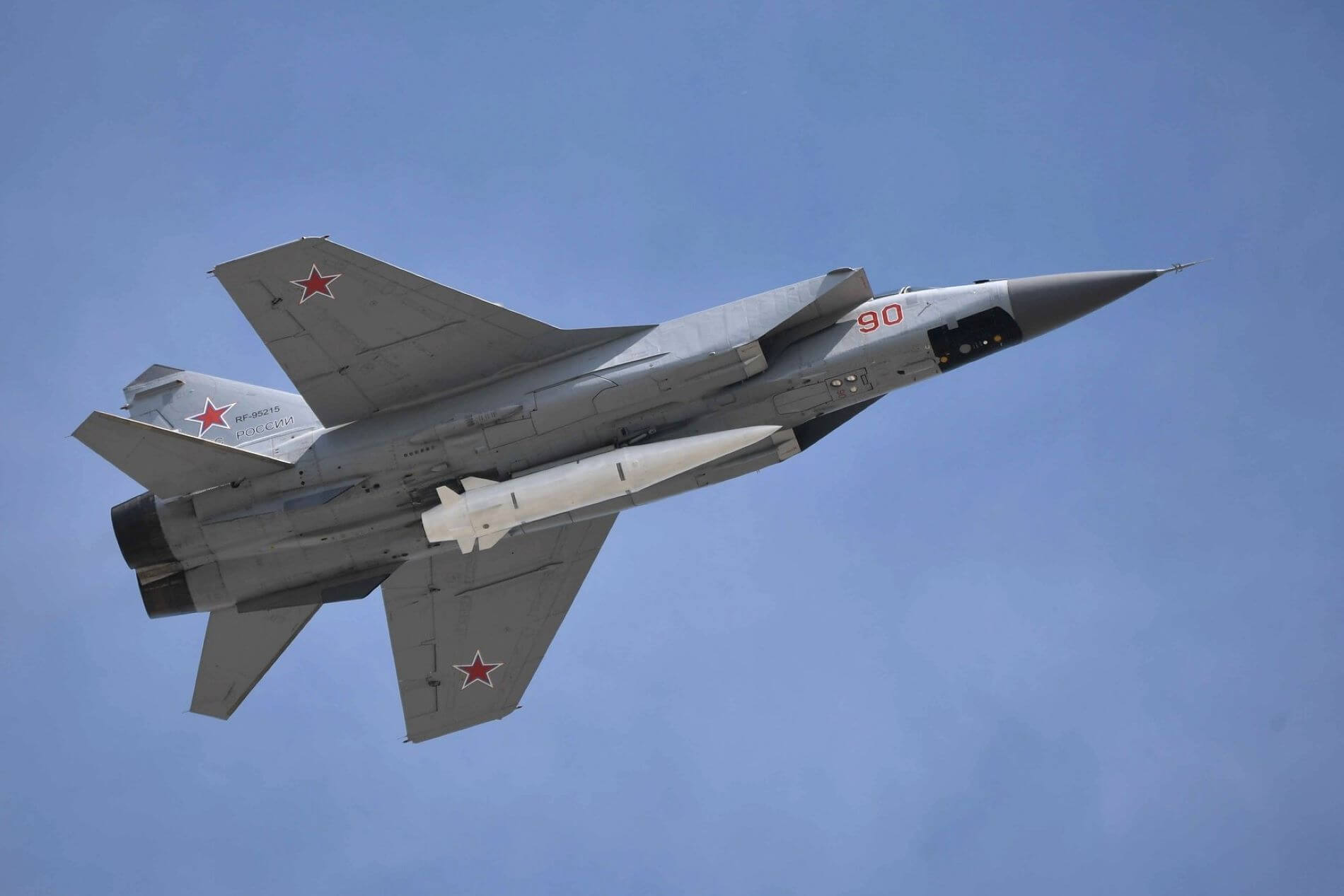Dangerous Crossroads: Russia Deploys MiG-31s in Response to USS Gerald Ford Supercarrier as “East Mediterranean Heats Up”

All Global Research articles can be read in 51 languages by activating the Translate Website button below the author’s name.
To receive Global Research’s Daily Newsletter (selected articles), click here.
Click the share button above to email/forward this article to your friends and colleagues. Follow us on Instagram and Twitter and subscribe to our Telegram Channel. Feel free to repost and share widely Global Research articles.
***
As the Israel-Gaza conflict escalates, with the expected involvement of various regional powers, the inclusion of global ones after the United States sent a massive naval force to the Eastern Mediterranean was guaranteed. And indeed, this now includes Russia which decided to send its superfast, high-flying MiG-31 jets to patrol the Black Sea. Namely, on October 18, Russian President Vladimir Putin publicly announced that Russian Aerospace Forces (VKS) will deploy MiG-31K/I (interceptors modified into strike fighters) armed with 9-A-7660 “Kinzhal” air-launched hypersonic missiles (usually given the unconfirmed Kh-47M2 designation) in response to large-scale US naval deployments. Although this doesn’t immediately indicate that the jets are on combat duty to tackle the possible involvement of US forces, the “Kinzhal’s” range and speed are more than enough to jeopardize American assets.
With the USS “Dwight D. Eisenhower” Nimitz-class supercarrier (CVN-69) joining the USS “Gerald R. Ford” (CVN-78), the US Navy now operates two carrier strike groups (CSGs) in the Eastern Mediterranean. Combined, both vessels can carry up to 180 aircraft, in addition to other ships escorting them as part of the CSGs. This massive force is a threat to Russian allies in the region, particularly Syria, and by extension, Moscow’s forces deployed in the Middle Eastern country.
The MiG-31s armed with “Kinzhals” and flying over the Black Sea cover the entirety of the Eastern Mediterranean without going anywhere near American CSGs. Namely, although estimates vary significantly, the “Kinzhal’s” range is up to 2000 km, meaning that the MiG-31K/I strike fighters are capable of launching the hypersonic missiles well beyond the range of any US ship-based air defenses, interceptors or similar assets.
It should be noted that the US Navy also sent the USS “Bataan” (LHD-5) Wasp-class amphibious assault ship with the 26th Marine Expeditionary Unit (SOC – Special Operations Capable) and additional naval forces.
The USS “Bataan” can also carry up to 20 aircraft, further reinforcing the already massive US presence in the area. In addition, the 26th MEU has at least 1600 marines, although its full combat strength is up to 2400. Apart from these, the Pentagon deployed other assets such as the A-10 “Thunderbolt II” attack jets, F-15E “Strike Eagle” strike fighters, as well as the B-1B “Lancer” long-range bombers. The latter were sent from their home base in Texas on October 12 and forward deployed to RAF (Royal Air Force) Fairford airbase in the United Kingdom. From there, “Lancers” could launch strikes against targets across the Middle East and elsewhere, jeopardizing at least half a dozen countries in the region.
As previously mentioned, all of the aforementioned assets are a threat to Russian forces deployed in the area, as well as to Moscow’s allies, particularly Syria. It should be noted that the forces Washington DC sent so far are absolutely unnecessary against Hamas. In fact, US President Joe Biden himself stated that Israel has “one of the finest fighting forces” and that it’s more than capable of dealing with Hamas. This leaves Russia, Iran and other countries in the Middle East with only one logical conclusion – the newly arrived US forces are there for other reasons. Apart from that, the deployment also coincides with the increase in activities of NATO-backed terrorist groups in Syria. This is particularly true for Turkish-supported jihadists that are now escalating their illegal activities in Syria, particularly in the terrorist-occupied northwestern part of the country, where they could launch offensive operations.
Washington DC could very well use the Israel-Gaza conflict as an opportunity to attack Syria or at the very least Iranian and pro-Iranian forces in the region, which could deeply destabilize Damascus. Moscow is committed to the preservation of Syria, not only because of its strategically important military facilities there, but also because NATO would inevitably turn the unfortunate country into yet another global hotbed of terrorism if President Bashar al-Assad is ever overthrown. It should be noted that Turkey is also deeply involved in this, despite its recent rhetoric condemning Israeli actions in Gaza. And while Turkish President Recep Tayyip Erdogan keeps fuming at Israeli Prime Minister Benjamin Netanyahu, behind the scenes, the two countries are still maintaining close ties. If Ankara had the interests of Palestinians in mind, it wouldn’t coordinate the terrorist groups it supports to escalate in Syria.
As for the Russian military, its deployment of MiG-31s armed with the “Kinzhal” air-launched hypersonic missiles is a prime example of how a very small-scale force can provide a massive asymmetric advantage over much larger US forces. The missile’s blistering speed of up to Mach 12 (or possibly even higher) is a virtually insurmountable obstacle for any air or missile defense system. In fact, despite repeated claims by the mainstream propaganda machine that the Kiev regime forces shot down at least half a dozen “Kinzhals”, the evidence for this is either non-existent or simply laughable. However, the Russian hypersonic missile did destroy at least one battery of the much-touted American “Patriot” SAM (surface-to-air missile) system back in mid-May. More recently, “Kinzhal” was made even more readily available to the VKS, as its Su-34 supersonic, multirole fighter-bombers can also use them now.
*
Note to readers: Please click the share button above. Follow us on Instagram and Twitter and subscribe to our Telegram Channel. Feel free to repost and share widely Global Research articles.
Drago Bosnic is an independent geopolitical and military analyst. He is a regular contributor to Global Research.
Featured image is from InfoBrics


